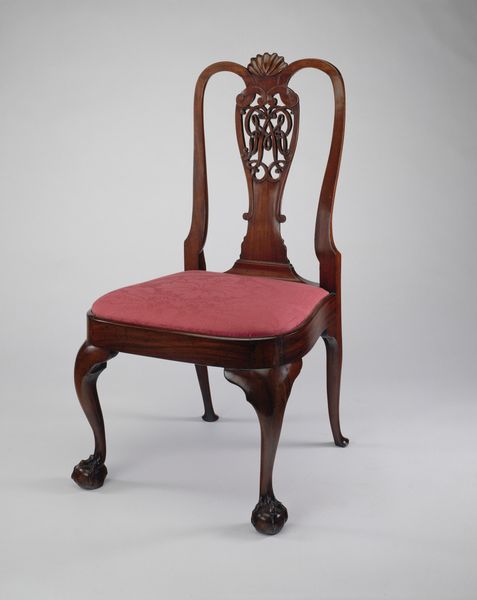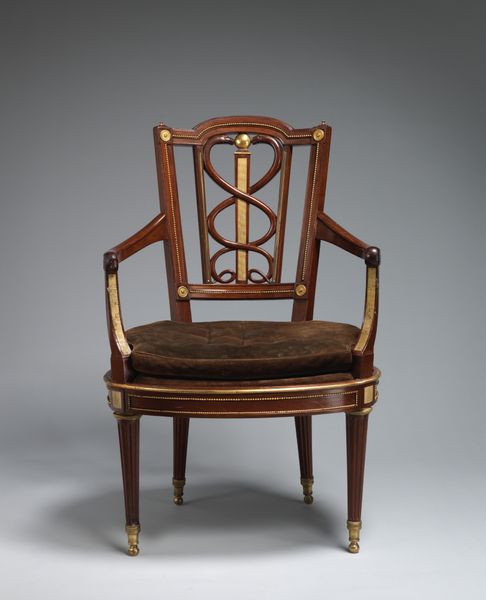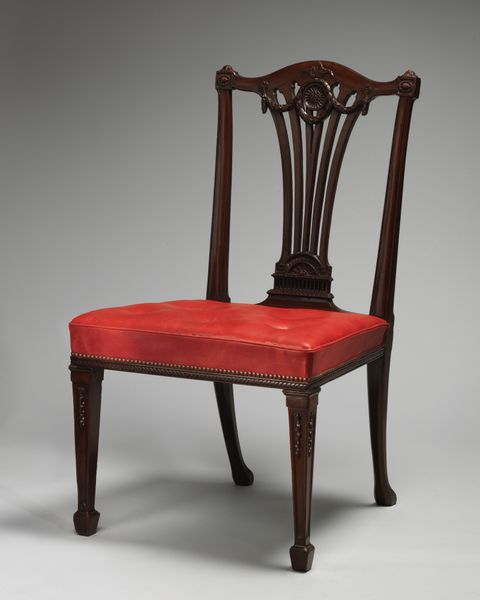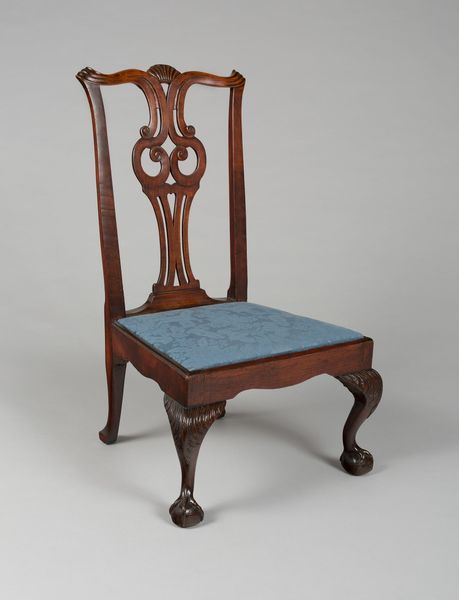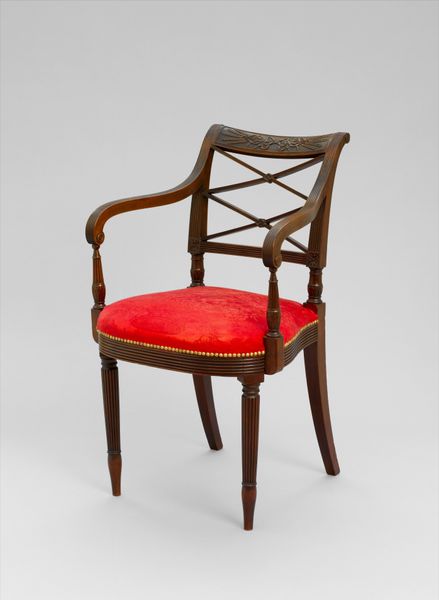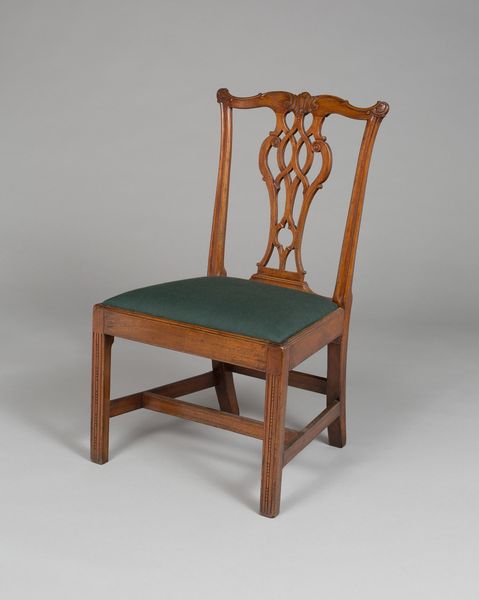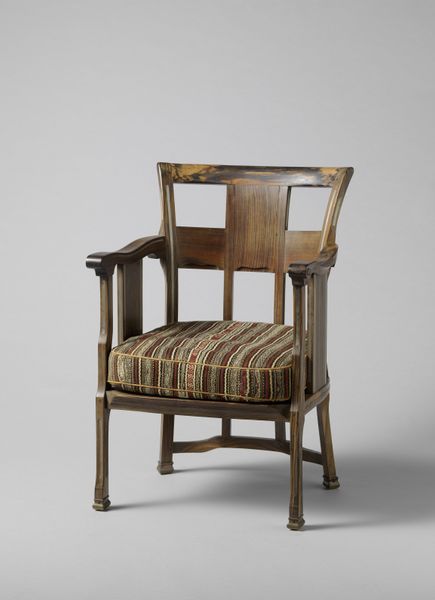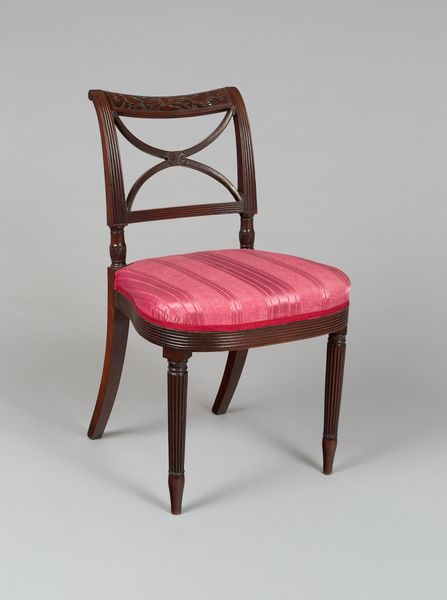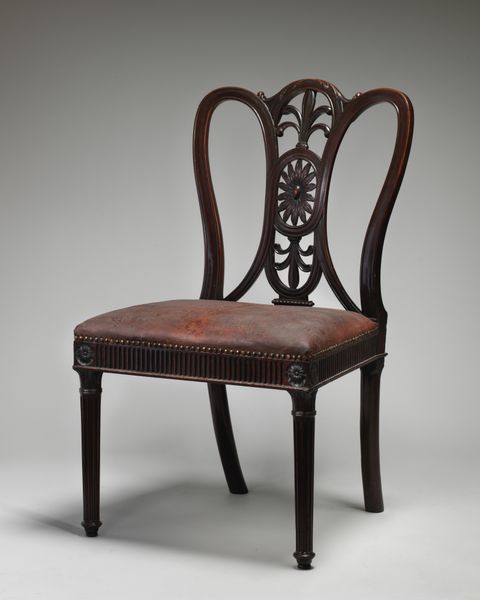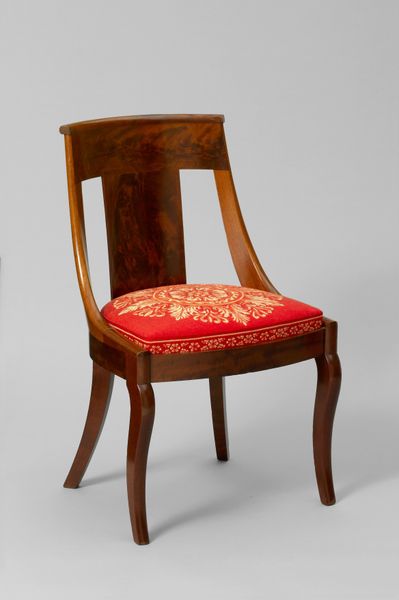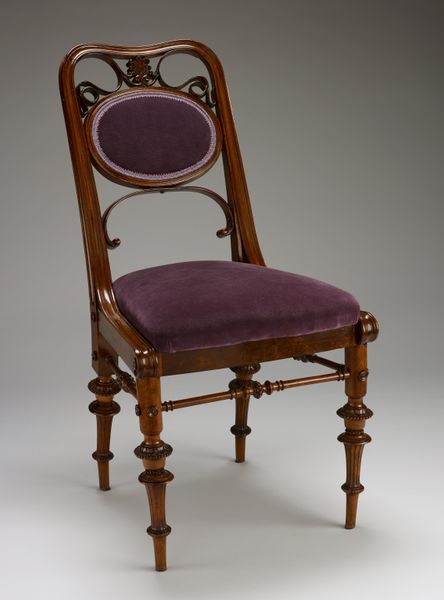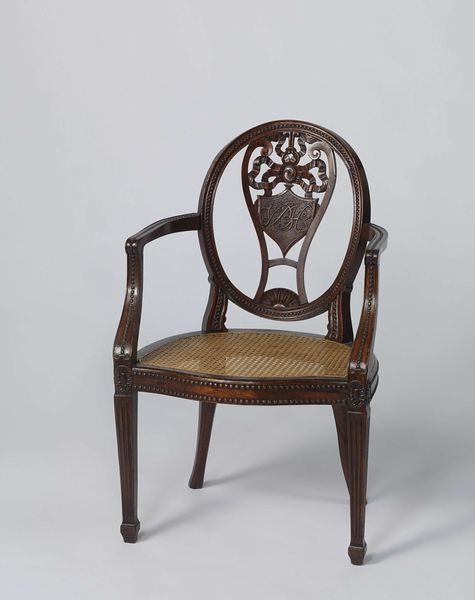
carving, wood
#
neoclacissism
#
carving
#
furniture
#
united-states
#
wood
Dimensions: 32 3/4 x 17 5/16 x 18 3/16 in. (83.2 x 44 x 46.2 cm)
Copyright: Public Domain
Curator: At first glance, I'm struck by the elegance of its curves and the deep color of the wood. It seems both sturdy and refined. Editor: You're right, there’s something quietly sophisticated about it. We are looking at a side chair, created by Duncan Phyfe, sometime between 1827 and 1830. Its materials are primarily wood, specifically mahogany, which has been intricately carved. Curator: Phyfe’s choice of mahogany is key. It’s a material often associated with luxury, signaling a certain status. Its density allows for detailed carving. One has to consider who had access to mahogany at this time, and the transatlantic trade networks required to obtain this material. This was not available to just anyone. Editor: Indeed. We can't divorce it from its social and economic context. This object speaks to a specific segment of early 19th-century American society. The United States, during that time, was witnessing growing wealth and increasingly defined social strata; this furniture piece undoubtedly played a role in shaping identities and the staging of domestic life. Curator: Looking at the chair's construction, I'm also impressed by the joinery. The lines are incredibly clean. The labor involved in achieving this level of precision suggests skilled craftsmanship—not just design, but its material execution. The curves are delicate but solid. There's a tension between ornamentation and utility. It’s neoclassical in style, a style intended to be functional for specific purposes. Editor: Absolutely. The neoclassical design firmly places this piece within a larger movement, a reflection of America's aspirations towards sophistication. Think about the galleries and display rooms it might have furnished! Spaces were, and remain, an influence on the public’s experience with decorative art. It reminds us that every aesthetic choice is also a political one. Curator: It's remarkable how much we can infer from this seemingly simple object. Editor: Precisely, a chair is more than just a place to sit, and more like a historical artifact. It invites consideration of societal structures during that historical period.
Comments
No comments
Be the first to comment and join the conversation on the ultimate creative platform.
